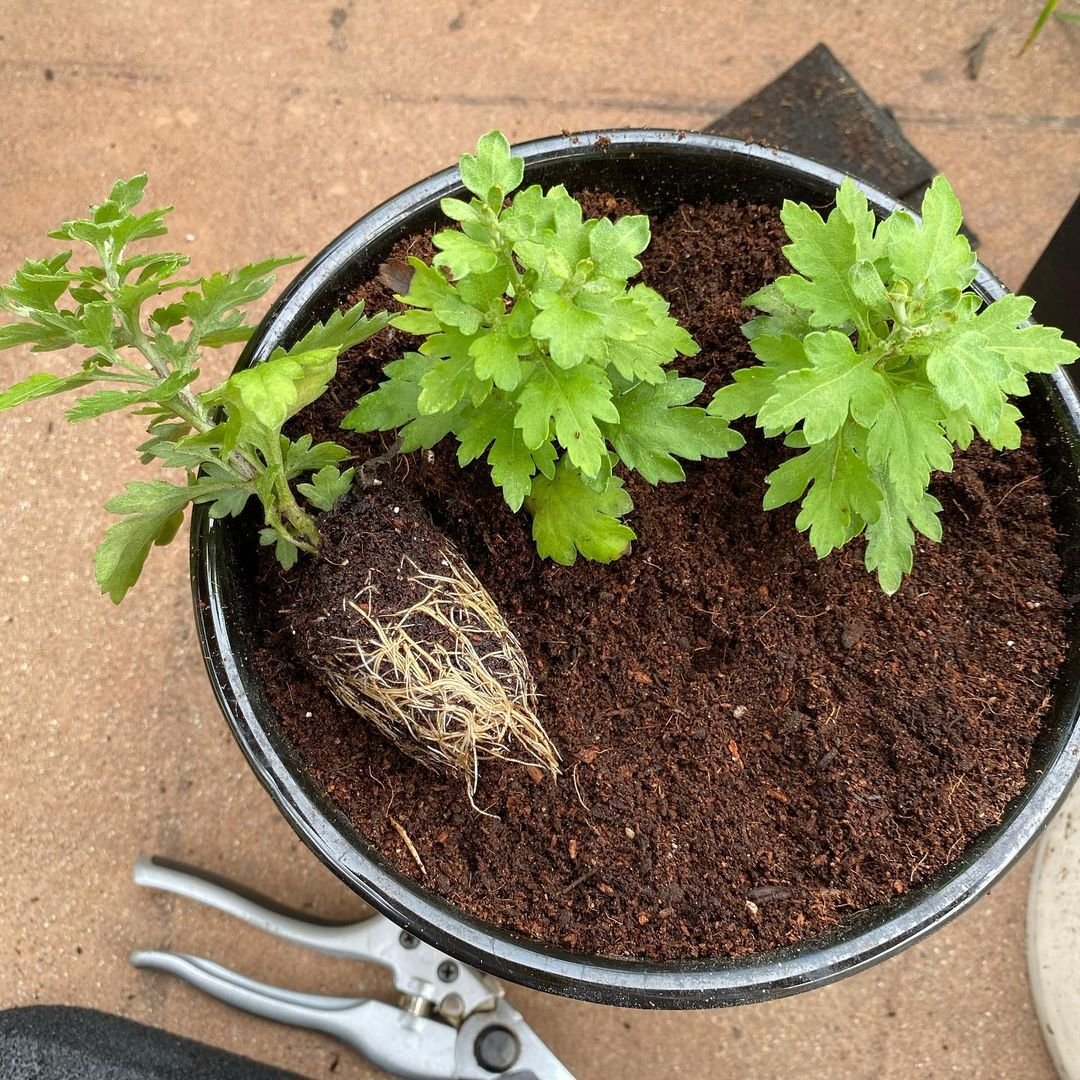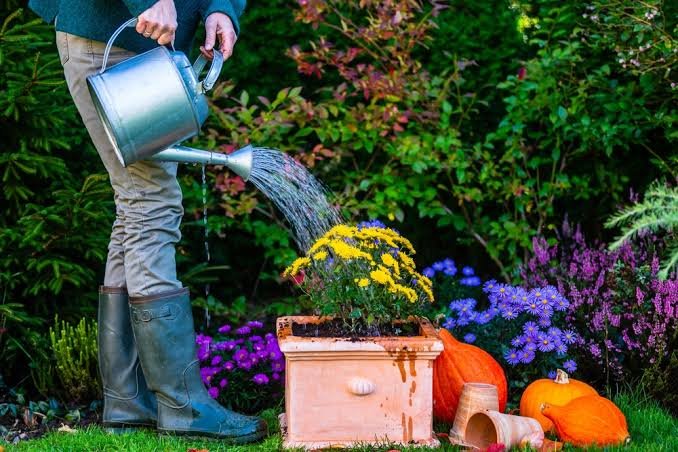Discover the vibrant charm of Yellow Mums with this comprehensive guide. Learn essential tips for growing, caring for, and enjoying these sunny flowers in your garden.
In the world of autumn blooms, few flowers can match the radiant beauty of Yellow Mums. These cheerful chrysanthemums, with their rich golden hues, bring a warmth and vibrancy to any garden or outdoor space. Whether you’re a seasoned gardener or just starting your journey, growing yellow mums can be a rewarding experience that adds a touch of sunshine to your landscape. In this guide, we’ll explore the fascinating history, varieties, and cultivation techniques for these stunning flowers, equipping you with the knowledge to create a stunning display of yellow mums in your own backyard.
Here’s a concise information chart about yellow mums:
| Attribute | Information |
|---|---|
| Botanical Name | Chrysanthemum spp. |
| Plant Type | Perennial flowering plant |
| Zones | 5-9 (varies by species and cultivar) |
| Exposure | Full sun to partial shade |
| Bloom Time | Late summer to fall |
| Height/Spread | Height: 1-3 feet Spread: 1-2 feet |
Understanding Yellow Mums

Mums, or chrysanthemums, are a diverse group of flowering plants that belong to the Asteraceae family. They are native to Asia and have been cultivated for centuries, with records dating back to 15th century BC China. Over time, these hardy flowers have been selectively bred and hybridized, resulting in a vast array of colors, shapes, and sizes.
Yellow mums are particularly beloved for their vibrant, sunny shades that range from pale buttery yellows to deep, rich golds. Their blooms can be daisy-like or more tightly clustered, with petals that curve inward or outward, adding texture and depth to their appearance.
Popular Varieties of Yellow Mums

When it comes to yellow mums, gardeners have a wealth of options to choose from. Here are some popular varieties to consider:
1. Golden Mums: As their name suggests, these mums boast a rich, golden yellow hue that adds warmth to any garden setting. They come in various shapes, including cushion, pompon, and decorative forms.
2. Yellow Spider Mums: These unique mums feature long, slender petals that resemble spider legs, creating a whimsical and eye-catching display. They come in shades ranging from pale yellow to deep golden hues.
3. Yellow Quill Mums: These mums have tubular petals that form a distinctive quill-like appearance. Their vibrant yellow color is complemented by their unique shape, making them a standout in any garden.
4. Yellow Anemone Mums: These mums have a distinct center disc surrounded by flat, daisy-like petals in shades of yellow. They add a touch of elegance to any garden design.
5. Yellow Cushion Mums: These compact mums feature tightly clustered blooms that resemble small cushions or mounds. Their cheerful yellow hues make them perfect for adding pops of color to borders or containers.
Growing Yellow Mums
While yellow mums are generally easy to grow and maintain, there are a few key factors to consider for a successful and vibrant display.
Planting

- Choose a location that receives full sun to partial shade, with at least 6 hours of direct sunlight per day.
- Plant mums in well-draining soil that is rich in organic matter. Amend the soil with compost or well-rotted manure before planting.
- Space the plants 12-18 inches apart, depending on the variety and expected mature size.
- Plant mums in early spring or late summer for a fall bloom.
Watering and Fertilizing

- Water mums deeply and regularly, ensuring the soil remains consistently moist but not waterlogged.
- Apply a balanced, slow-release fertilizer in early spring and again in mid-summer to promote healthy growth and abundant blooms.
- Avoid fertilizing mums after mid-August, as this can encourage new growth that may not have time to harden off before winter.
Pruning and Deadheading
- Pinch back the tips of mum stems in early summer to encourage bushier growth and more blooms.
- Deadhead spent flowers regularly by removing the faded blooms and their stems to encourage continued flowering.
- After blooming, cut the mum stems back to about 6 inches above the ground to prepare them for winter dormancy.
Overwintering
In colder climates (USDA zones 7 and below), mums are typically treated as annuals or lifted and overwintered indoors. Here are some tips for overwintering:
- After the first hard frost, carefully dig up the mum plants, shake off excess soil, and place them in a cool, dark area like a basement or garage.
- Pack the roots in slightly moistened peat moss or vermiculite, and store them at temperatures between 35-45°F (2-7°C).
- In early spring, remove the plants from storage and replant them in your garden once the danger of frost has passed.
Enjoying Yellow Mums in Your Garden
Yellow mums are versatile flowers that can be incorporated into your garden in various ways. Here are some ideas to inspire you:
Borders and Beds

Create stunning borders or dedicated mum beds by planting yellow mums in groups or drifts. Mix different varieties and shades for a vibrant and eye-catching display.
Container Gardening

Yellow mums make excellent container plants, adding pops of color to patios, decks, or entryways. Choose compact varieties and combine them with complementary plants for a beautiful arrangement.
Cut Flower Arrangements

Fresh or dried, yellow mums make excellent additions to cut flower arrangements. Their long-lasting blooms bring warmth and cheer to any bouquet or indoor display.
Fall Decorations

Embrace the autumn spirit by incorporating yellow mums into your outdoor and indoor decorations. Use them in porch displays, wreaths, or centerpieces for a touch of seasonal charm.
Troubleshooting Common Issues

While generally hardy, yellow mums can sometimes encounter a few common issues. Here are some tips for addressing them:
Lack of Blooms
If your yellow mums fail to bloom or produce sparse flowers, it could be due to several factors:
- Inadequate sunlight: Ensure your mums receive at least 6 hours of direct sunlight per day.
- Excessive nitrogen fertilizer: Too much nitrogen can promote leafy growth at the expense of blooms. Use a balanced fertilizer and follow the recommended application rates.
- Overcrowding: Mums may fail to bloom if they are overcrowded or planted too close together. Thin out or transplant overcrowded plants.
Powdery Mildew
This fungal disease appears as a white, powdery coating on the leaves and stems of your mums. To combat it:
- Improve air circulation around the plants by pruning overcrowded growth.
- Water at the base of the plants, avoiding wetting the foliage.
- Apply a fungicide formulated for powdery mildew if the problem persists.
Aphids and Other Pests
Yellow mums can sometimes attract aphids, spider mites, or other pests. To manage these issues:
- Inspect your plants regularly and remove any pests or affected plant parts.
- Apply insecticidal soap or neem oil to control pest populations.
- Encourage beneficial insects like ladybugs and lacewings, which can help keep pests in check.
Conclusion
Yellow mums are a true gift to gardeners, offering a radiant burst of sunshine in the cooler months of autumn. By following the tips and techniques outlined in this guide, you can successfully grow and enjoy these vibrant flowers in your own garden. Whether planted in borders, containers, or incorporated into seasonal displays, yellow mums are sure to brighten up your outdoor spaces and bring a touch of warmth to your fall landscapes. Embrace the beauty of these stunning blooms and let their cheerful presence uplift your spirits season after season.
Pingback: The Radiant Beauty of Yellow Mums: A Gardener&r...
Pingback: The Radiant Beauty of Yellow Mums: A Gardener&r...
Pingback: Spanish Lavender Care: Guide to Unique Bunny-Eared Blooms
Pingback: Mangaves: How to Grow Magnificent Agave Hybrids Successfully
Pingback: 12 White Flowers That Add Bold Beauty to Any Garden
Pingback: Grow Your Own Wisteria from Seeds: A Step-by-Step Guide -
Pingback: Nerve Plant: A Comprehensive Care Guide -
Pingback: Grow Your Quirky Tractor Seat Plant: A Comprehensive Guide
Pingback: Bridal Veil Plant: A Guide to Growing and Caring
Pingback: Chili Plants: The Ultimate Guide to Growing Them -
Pingback: Butterflies: The Ultimate Spotter’s Guide to Winged Wonders
Pingback: 14 Flowers That Look Like Birds: Beauty in Nature’s Design
Pingback: How to Grow and Care for Flowering Quince in Your Garden
Pingback: Guide to Greatness: Discovering Trees That Start with ‘G’ - Gardener's School
Pingback: Beautiful Trees That Start With ‘Z’ - Gardener's School
Pingback: Pruning Tomato Plants: A Comprehensive Guide
Pingback: 8 Hydrangea Varieties That’ll Add Some Color to Your Garden
Pingback: 17 Beautiful Flowers That Start With B Gardeners School
Pingback: 13 Purple Orchids Varieties For Your Gardens
Pingback: Nerve Plant: A Comprehensive Care Guide - Gardener's School
Pingback: Sunflower Doppelgangers: 10 Flowers That Look Like Sunflower
Pingback: Forget Me Nots Care: A Comprehensive Guide
Pingback: How to Grow and Care for Broom Plants - Gardener's School
Pingback: 10 Texas Caterpillars : A Visual Identification Guide - Gardener's School